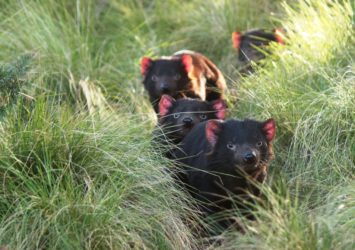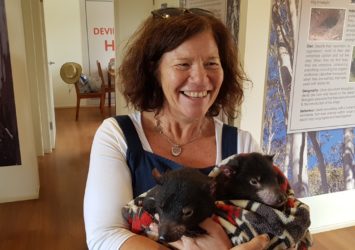World heritage Barrington Tops has been a safe haven for many native species for hundreds of thousands of years. And for the past 10 years Aussie Ark has been working towards rewilding the region with species that once called it home, including the Tasmanian devil.
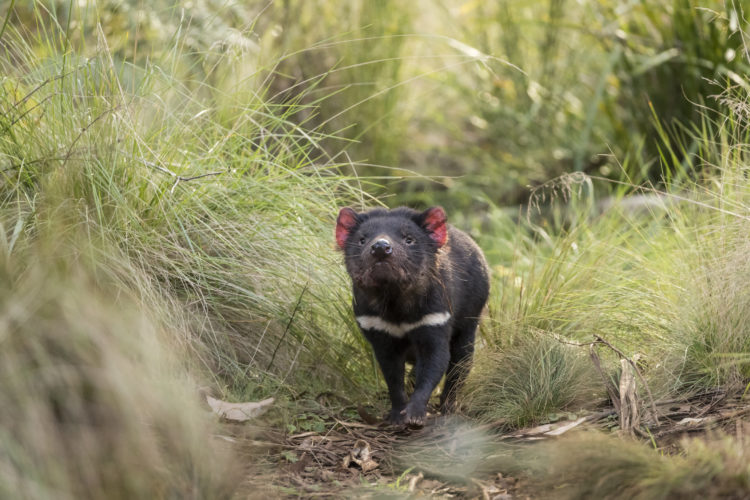
Tasmanian devils are some of Australia’s most iconic species. Once widespread across mainland Australia, the devilish mammal is now only found on the island of Tasmania where small populations are fighting a highly contagious and deadly disease, the devil facial tumour disease (DFTD). Sadly, over 90% of Tasmanian devils are already gone due to this affliction. Considered endangered by the Australian Government as well as the IUCN Red List since 2008, Tasmanian devils have been given a second chance at life by Aussie Ark.
With the dramatic success of its Tasmanian devil program, Aussie Ark has expanded the list of keystone species to another 7 endangered species.

Previously called Devil Ark, Aussie Ark was founded in 2011 with the aim of breeding and returning the iconic animal to the continent and in Tasmania. In a matter of years, Aussie Ark became the largest conservation breeding program for the Tasmanian devil on mainland Australia and NSW’s largest independently owned and operated conservation organisation.

Why Barrington Tops?
Located at an altitude of 1,350 metres in Barrington Tops, Aussie Ark provides the perfect breeding environment for devils as the area resembles almost to perfection the Tasmanian climate and terrain. Indeed, the Tasmanian-like vegetation and temperature, as well as the wet and snowy conditions, mean that the Tasmanian devils are feeling right at home.
Recognised as a globally significant bioregion, the Barrington Tops region of NSW holds approximately 15% of all Australian vertebrate species and one of the world’s seven major wet temperate forests. The region is dominated by wet temperate forests, and significant to the survival of both the flora and fauna that call it home. The area is also topographically diverse and complex with altitudinal ranges from 200m rising to 1100m, with rugged wet subtropical rainforest and subalpine environments.

Aussie Ark’s Tasmanian devil breeding program was established with a small population of 44 devils. Since then, the organisation has had 7 successful breeding seasons and is currently home to more than 250 devil individuals. Aussie Ark manages a genetically robust population that exists in large wild-type environments, therefore helping to retain wild behaviours for later rewilding.
And in a wildlife release that made headlines around the world, in September 2020 Aussie Ark released 26 Tasmanian devils into their Barrington Wildlife Sanctuary.

About the facility
Aussie Ark uses a cost-effective and efficient conservation model for species recovery to create an insurance population to mitigate against possible extinction of the Tasmanian devil in the wild. Devils are paired for breeding to maximize genetic diversity and the natural conditions at Aussie Ark preserve the devil’s normal wild-type behaviours resulting in natural and successful breeding.
Aussie Ark’s enclosures are large - between 1-3 hectares each - in naturalistic wild areas with native vegetation and surrounds. Each enclosure contains a small group of devils that behave as they would in the wild. With limited human exposure, the devils retain their wild behavioural traits, maintaining their independence and relying on their own natural instincts to prepare them for eventual release back into the wild.
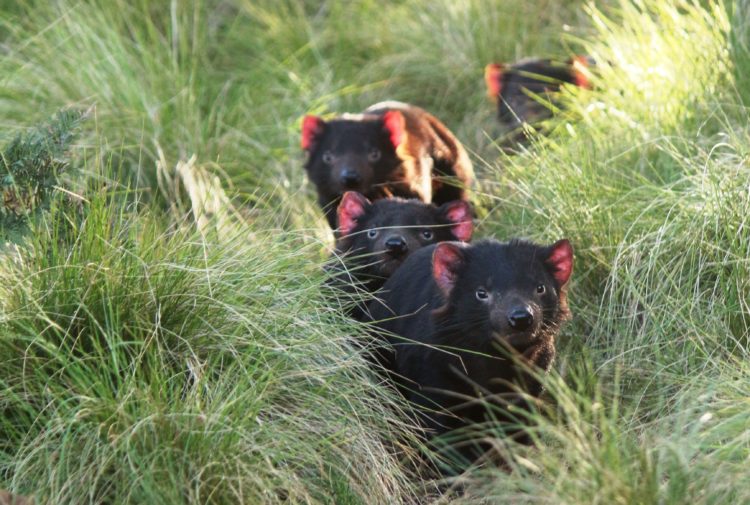
Devil Facial Tumour Disease
The primary threat to Tasmanian devils is disease. Devil Facial Tumour Disease (DFTD) is an infectious cancer transmitted through biting, fighting and mating that only affects Tasmanian devils. It is one of the only cancers known to spread like a contagious disease and there is no cure. It was first detected in 1996 and almost 25 years later, 90% of the wild population has disappeared and the disease is rapidly spreading without any sign of slowing down. While Tasmanian devils are persisting in some areas with DFTD, numbers have not recovered, believed to be lower than 25,000 individuals. Devils are now also vulnerable to catastrophic loss due to localised threats of road strike, habitat loss and historically hunting.
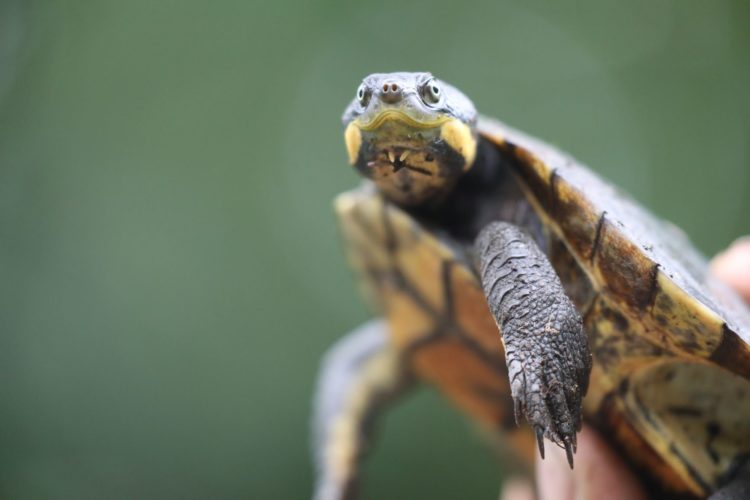
A long list of endangered species
Aussie Ark is focused on its commitment to save the Tasmanian devil and to ensure the survival of this Australian icon and key species to the ecosystem. Devils are critical to the wilderness of Tasmania as they play an important role in the ecosystem, being the top order predator and protecting many smaller mammal species from the invasion and threat of foxes and cats. A range of species including Brush-tailed bettongs, Eastern quolls, Spotted-tail quolls, Eastern-barred bandicoot and many others rely on the Tasmanian devil to perform its ecological function.
Aussie Ark’s conservation efforts are indispensable for the survival of this iconic animal. Following the dashing success of its Tasmanian devil breeding program, Aussie Ark has expanded the list of species under its care and is currently protecting 7 other native endangered species. Those species are Eastern quolls, Parma wallabies, Brush-tailed rock-wallabies, Rufous bettongs, Long-nosed potoroos, Southern brown bandicoots and Manning River turtles. In addition to the 8 keystone species at Aussie Ark, there are a further 50 species of mammals, 278 species of birds, 42 species of reptiles and 18 species of frogs that are protected through the Aussie Ark sanctuaries.
See the detailed list here.
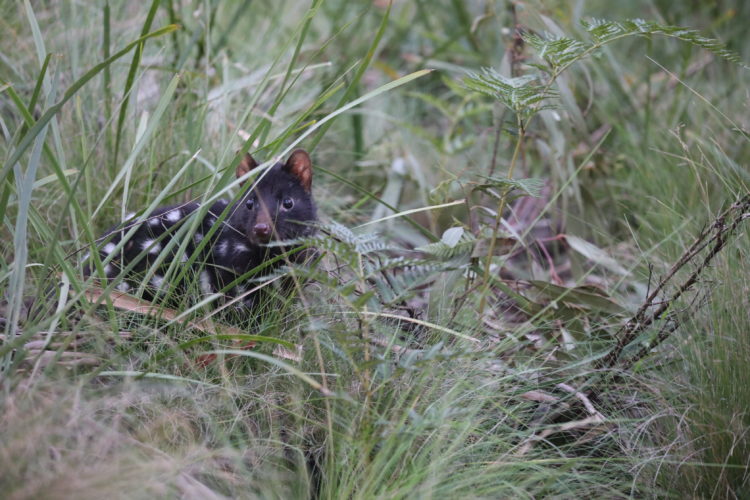
The organisation has already established insurance populations for all of the above-mentioned species through breeding programs. Each year, all species are successfully reproducing with 139 joeys born during the 2019-2020 breeding season. Aussie Ark manages genetically robust populations that exist in predator-proof fenced sanctuaries and large wild-type environments to help retain wild behaviours for eventual reintroduction to the wild.
Aussie Ark's core activities include building insurance populations, fire management, feral cat and fox exclusion, feral herbivore control, weed eradication, bush rejuvenation, field science programs and wildlife translocations.
With a continual growth of the organisation’s influence over the years, Aussie Ark is looking to expand its area of conservation, in addition to the list of species under its care. The next few years will see the rising of diverse projects related to property acquisition and species recovery units construction.
